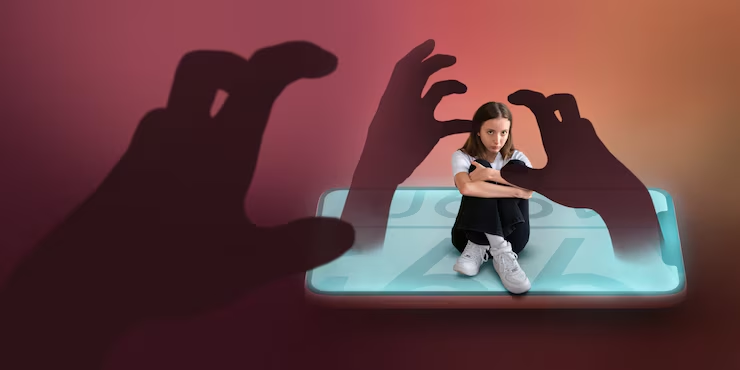Introduction: Is Your Screen Controlling You?
In today’s hyperconnected world, it’s easy to forget what life feels like without constant notifications, endless scrolling, and the pressure to be “always online.” Whether it’s social media, emails, or video streaming, digital overload is silently stealing away time, peace of mind, and real-world interactions. A digital detox isn’t just a trendy buzzword—it’s a necessary reset that your brain, body, and soul desperately need.
As tech entrepreneur Tim Ferriss once said,
“Technology is a great servant, but a terrible master.”
And right now, for most people, it’s more master than servant.
If you find yourself anxiously checking your phone first thing in the morning or feeling uneasy when your battery drops below 20%, it might be time for a digital detox. But what does that really mean, and how can you do it without feeling like you’ve been banished to a deserted island?
Let’s dive deep.
What Is a Digital Detox?
A digital detox refers to a period of time when someone intentionally refrains from using digital devices such as smartphones, computers, tablets, and social media platforms. The goal isn’t to reject technology, but rather to restore a healthy balance in life by becoming more mindful of screen usage.
According to a report by Statista, the average person now spends over 2 hours and 30 minutes per day on social media alone. That’s roughly 17.5 hours per week—almost the same as a part-time job!

Why Do You Need a Digital Detox?
1. Mental Clarity and Focus
Excessive digital consumption can fragment your attention. Constant switching between apps and tabs affects your ability to concentrate. A digital detox can help your brain reset its focus mechanism, improving productivity and mental well-being.
2. Improved Sleep
Blue light emitted from screens interferes with melatonin production, making it harder to fall asleep. Detoxing from screens—especially before bedtime—can lead to deeper, more restful sleep.
3. Enhanced Relationships
Have you ever been on a dinner date where everyone was glued to their phone? Disconnecting from screens allows for deeper, more meaningful human connections.
4. Reduced Anxiety
The pressure to stay updated and compare lives through curated social feeds often leads to stress and FOMO (Fear of Missing Out). Taking a break gives the mind a chance to breathe.
Signs You Might Be Addicted to Your Device
| Sign | Explanation |
| Reaching for your phone the moment you wake up | A sign of dependency and digital anxiety |
| Feeling anxious when disconnected | Emotional reliance on digital interaction |
| Checking notifications every few minutes | Poor attention span and reduced presence in real life |
| Using devices during meals or gatherings | Lack of mindfulness and social detachment |
If you find yourself checking off two or more signs from the table above, it’s a clear indication that you could benefit from a digital detox.

How to Do a Digital Detox the Right Way
1. Set Clear Goals
Don’t just say, “I’ll use my phone less.” Define specific, measurable goals like:
- No social media after 8 PM
- One screen-free day per week
- Only 30 minutes of news apps per day
2. Start Small
Going cold turkey can backfire. Instead, begin with a few hours each day where you stay unplugged. Build this up gradually.
3. Use Tech to Beat Tech
Apps like Forest, Moment, or Freedom can help track screen time and block distractions while encouraging mindful use.
4. Create Tech-Free Zones
Designate areas like the bedroom, dining table, or bathroom as device-free zones to promote better routines and more human interaction.
5. Find Offline Alternatives
Boredom is often the biggest trigger to go back online. Instead, read a book, take a walk, journal, or call a friend. Replace the digital habit with a healthier alternative.
Real-Life Scenario: What Happens During a 7-Day Digital Detox?
Here’s what a typical 7-day detox journey might look like:
| Day | Experience | Emotions |
| Day 1 | Constant urge to check phone | Restless, anxious |
| Day 2 | Realize how often phone is used out of habit | Surprised, irritated |
| Day 3 | Start enjoying quiet moments | Calmer, more focused |
| Day 4 | Sleep improves, feel less rushed | Relaxed, peaceful |
| Day 5 | Enjoy offline hobbies like painting, walking | Joyful, productive |
| Day 6 | Relationships feel more present | Grateful, connected |
| Day 7 | Don’t feel the need to go back immediately | Empowered, rejuvenated |
Frequently Asked Question:
“Is It Even Possible to Do a Digital Detox in Today’s World?”
Absolutely. A digital detox doesn’t mean quitting technology forever. It means regaining control over your usage, rather than letting your devices control you. Even tech professionals and CEOs are known to unplug for a few days to recharge mentally.
You can still check emails or make necessary calls—just with more intention and less compulsion.
Final Thoughts: Reconnect by Disconnecting

Digital devices are powerful tools, but they shouldn’t dominate every waking moment. A digital detox is not a punishment—it’s a gift to yourself. A chance to rediscover what truly matters, to breathe without buzzes, and to experience life beyond a glowing screen.
So the next time you feel overwhelmed by your screen, ask yourself:
“What am I missing in the real world while scrolling through the digital one?”

